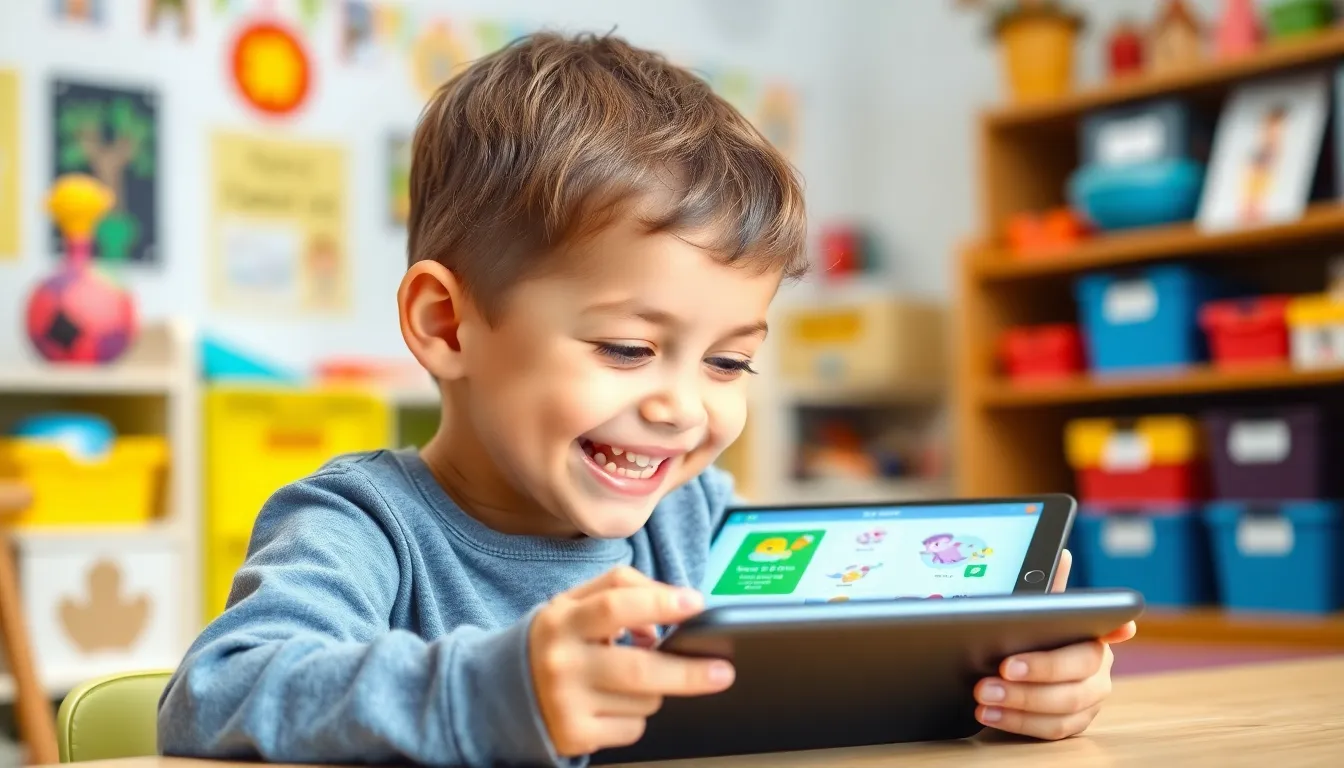In a world where discipline often means a stern look or a time-out, the idea of guidance over punishment is like a refreshing splash of cold water on a hot day. Imagine a scenario where mistakes are seen as stepping stones instead of stumbling blocks. It’s not just about avoiding the naughty list; it’s about nurturing growth and understanding.
When guidance takes the front seat, everyone wins. Instead of fear, there’s curiosity. Instead of resentment, there’s respect. This approach transforms the way we learn, whether in classrooms, workplaces, or homes. So why stick to the old playbook of punishment when a little guidance can turn missteps into masterpieces? Let’s dive into the benefits of embracing a more supportive way of teaching and correcting, where everyone walks away with a smile—and maybe even a high-five.
Table of Contents
ToggleThe Concept of Guidance Over Punishment
Guidance over punishment offers a transformative approach to discipline across diverse settings like classrooms, workplaces, and homes. This concept encourages viewing mistakes as valuable learning opportunities instead of failures. By making this shift, individuals foster curiosity and respect rather than fear and resentment.
Positive reinforcement plays a crucial role in this framework. It allows people to learn from their actions in a supportive environment. Emphasizing understanding creates opportunities for deeper engagement and personal growth.
Mistakes often signify areas that require attention, rather than a need for punitive measures. Such recognition leads to constructive dialogue, allowing individuals to explore underlying issues. As a result, individuals feel more invested in their personal development.
In educational settings, teachers who apply guidance foster a culture of collaboration. Collaboration outweighs traditional punitive measures, proving more effective in cultivating a love for learning. Likewise, workplaces that prioritize guidance see improved morale and productivity. When employees engage in open discussions rather than fearing reprimand, innovation flourishes.
Moreover, guidance techniques promote emotional intelligence. Individuals develop skills to navigate interpersonal relationships, enhancing communication and conflict resolution abilities. The emphasis on positive behavior nurtures a sense of community and belonging.
Guidance over punishment redefines interactions and promotes a constructive atmosphere. Embracing this approach fosters an environment where growth outshines the threat of punishment. The results benefit everyone involved, creating a positive cycle of learning and development.
Importance of Guidance in Child Development
Guidance plays a crucial role in effective child development. Focusing on support instead of punishment encourages a positive learning environment.
Positive Reinforcement Strategies
Positive reinforcement strategies significantly enhance a child’s motivation to learn. Rewarding good behavior encourages more of the same. For instance, praising a child’s effort after completing a task reinforces their commitment to trying hard. Implementing rewards or incentives, like stickers or additional playtime, creates a sense of achievement. Encouragement fosters a growth mindset, ensuring children view challenges as opportunities. Constructive feedback helps children understand their strengths and areas for improvement. By maintaining a supportive atmosphere, educators and parents cultivate resilience and a love of learning.
Emotional Support Mechanisms
Emotional support mechanisms are vital in nurturing children’s social skills. Acknowledging feelings fosters open communication, allowing children to express emotions safely. Active listening plays a crucial role in this process, as it shows kids their emotions matter. Providing a stable emotional environment promotes secure relationships, enabling children to thrive. Encouragement during difficult times bolsters confidence, leading to better problem-solving skills. Developing empathy in children fosters strong interpersonal connections. Supportive adults guide children in navigating challenges, ensuring they grow into emotionally intelligent individuals.
Effective Parenting Techniques
Effective parenting techniques prioritize guidance over punishment, fostering a supportive atmosphere for children’s growth and development.
Communication and Understanding
Open communication forms the foundation of effective parenting. Sharing thoughts and feelings promotes understanding between parents and children. Listening actively allows parents to grasp the child’s perspective, which strengthens trust. Encouragement of questions creates a safe space for curiosity. Practicing empathy helps parents respond appropriately to their child’s needs and emotions. Honest discussions about mistakes frame them as learning opportunities rather than failures. This approach nurtures strong connections, ensuring children feel valued and heard. A supportive dialogue empowers children to express themselves freely, enhancing emotional intelligence.
Setting Boundaries and Expectations
Clear boundaries provide children with a sense of security and structure. Establishing expectations helps them understand acceptable behavior within various contexts. Consistent reinforcement of these limits fosters stability and predictability. Involving children in discussions about rules encourages ownership and accountability. When parents explain the reasons behind boundaries, children gain insight into decision-making processes. This understanding aids in developing self-regulation skills. Adjusting expectations as children grow demonstrates adaptability and acknowledges their evolving capabilities. Ultimately, maintaining fairness in rule enforcement promotes a cooperative environment while guiding children toward responsible behavior.
Educational Settings and Guidance
Guidance in educational settings promotes student growth and development. Emphasizing this approach encourages teachers to focus on fostering resilience and emotional intelligence.
Role of Teachers in Student Development
Teachers play a critical role in shaping the learning experiences of students. Developing a nurturing environment leads to better engagement and collaboration. By framing mistakes as chances for growth, educators instill a mindset of curiosity. Encouragement through positive reinforcement motivates students to explore new ideas. Relationships built on trust enhance communication, making it easier for students to seek help. Teachers set the tone for the classroom culture, supporting emotional well-being while guiding academic pursuits.
Creating a Supportive Learning Environment
A supportive learning environment fosters curiosity, respect, and open dialogue. Establishing clear expectations provides a sense of security for students. Promoting active listening helps students feel valued and understood. Celebrating individual achievements cultivates a sense of belonging and community. With regular feedback, students receive guidance that aids their progress. Encouraging peer interactions facilitates collaborative learning experiences. Such environments enhance motivation, reducing anxiety and encouraging innovation in the classroom.
Conclusion
Embracing guidance over punishment transforms interactions in classrooms, workplaces, and homes. This approach nurtures emotional intelligence and fosters a culture of collaboration and support. By viewing mistakes as growth opportunities, individuals feel empowered to engage more deeply and creatively.
The shift towards guidance cultivates resilience and encourages open communication, essential for developing strong relationships. As communities prioritize understanding and constructive feedback, they create environments where everyone can thrive. Ultimately, this focus on guidance not only benefits individual growth but also strengthens the collective fabric of society, leading to a more compassionate and innovative future.








